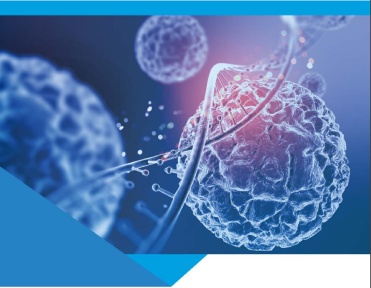Neuroresearchers at Macquarie University in Australia say they have developed a single-dose genetic medicine that has halted the progression of both amyotrophic lateral sclerosis (ALS) and frontotemporal dementia (FTD) in mice. The team, which believes its approach may even offer the potential to reverse some of the effects of the fatal diseases, thinks it may also hold opportunities for treating more common forms of dementia, such as Alzheimer’s disease.
The new treatment, dubbed CTx1000, targets pathological build-ups of the protein TDP-43 in cells in the brain and spinal cord, which has been associated with ALS, FTD, and other forms of dementia. The scientists, led by Lars Ittner, PhD, hope to see CTx1000 begin human clinical trials in as little as two years. Their study “Targeting 14-3-3?-mediated TDP-43 pathology in amyotrophic lateral sclerosis and frontotemporal dementia mice” appears in Neuron.
“Amyotrophic lateral sclerosis (ALS) and frontotemporal dementia (FTD) are characterized by cytoplasmic deposition of the nuclear TAR-binding protein 43 (TDP-43). Although cytoplasmic re-localization of TDP-43 is a key event in the pathogenesis of ALS/FTD, the underlying mechanisms remain unknown. Here, we identified a non-canonical interaction between 14-3-3θ and TDP-43, which regulates nuclear-cytoplasmic shuttling,” wrote the investigators.
“Neuronal 14-3-3θ levels were increased in sporadic ALS and FTD with TDP-43 pathology. Pathogenic TDP-43 showed increased interaction with 14-3-3θ, resulting in cytoplasmic accumulation, insolubility, phosphorylation, and fragmentation of TDP-43, resembling pathological changes in disease. Harnessing this increased affinity of 14-3-3θ for pathogenic TDP-43, we devised a gene therapy vector targeting TDP-43 pathology, which mitigated functional deficits and neurodegeneration in different ALS/FTD mouse models expressing mutant or non-mutant TDP-43, including when already symptomatic at the time of treatment.
“Our study identified 14-3-3θ as a mediator of cytoplasmic TDP-43 localization with implications for ALS/FTD pathogenesis and therapy.”
Fifteen years of research
For the past 15 years, Ittner and his team have been researching pathological TDP-43 build‑up. He says in their latest findings, the group has discovered for the first time that where there is pathological TDP‑43, there is also an increase in a second protein, 14‑3‑3.
“The two proteins interact, resulting in these build-ups in the cells,” explains Ittner. “From this, we were able to isolate a short peptide that controls this interaction, and that’s what we used to create CTx1000. When we administered it in the lab, it dissolved the build-ups, tagging TDP-43 proteins for recycling by the body, and prevented new ones from forming.
“Importantly, CTx1000 targets only pathological TDP-43, allowing the healthy version of the protein to be produced and go about its work unhindered.”
According to Ittner, CTx1000 has shown no adverse effects in their studies. Lead author of the paper, Yazi Ke, PhD, notes that in lab conditions, CTx1000 stopped ALS and FTD from progressing even at advanced stages, and resolved the behavioral symptoms associated with FTD.
“We have great hopes that when this progresses to human trials, it will not only stop people from dying from both ALS and FTD, but even allow patients to regain some of the lost function through rehabilitation,” she said.
Celosia Therapeutics, a Macquarie University spin-out company formed in 2022, plans to help bring CTx1000 from the lab to patients and is seeking investment to facilitate CTx1000 to progress to clinical trial stage.
https://www.genengnews.com/topics/genome-editing/gene-therapy-in-mice-holds-promise-for-als-and-dementia/

Check out our AAV CDMO service to expedite your gene therapy research
PackGene Biotech is a world-leading CRO and CDMO, excelling in AAV vectors, mRNA, plasmid DNA, and lentiviral vector solutions. Our comprehensive offerings span from vector design and construction to AAV, lentivirus, and mRNA services. With a sharp focus on early-stage drug discovery, preclinical development, and cell and gene therapy trials, we deliver cost-effective, dependable, and scalable production solutions. Leveraging our groundbreaking π-alpha 293 AAV high-yield platform, we amplify AAV production by up to 10-fold, yielding up to 1e+17vg per batch to meet diverse commercial and clinical project needs. Moreover, our tailored mRNA and LNP products and services cater to every stage of drug and vaccine development, from research to GMP production, providing a seamless, end-to-end solution.
Related News
Exploring Tau Protein’s Role in Glaucoma: New Insights and Therapeutic Potential
Glaucoma, a chronic neurodegenerative disorder, leads to irreversible vision loss by damaging retinal ganglion cells (RGCs) and the optic nerve, often associated with increased intraocular pressure (IOP). Despite the benefits of IOP-lowering treatments, the underlying...
FDA-mandated CAR-T monitoring period could be halved, say researchers
In patients with diffuse large B-cell non-Hodgkin lymphoma (DLBCL), the two hallmark post-chimeric antigen receptor (CAR)-T therapy toxicities are extremely rare after two weeks, supporting a shorter, more flexible toxicity monitoring period, according to a study...
Ancestral CRISPR-Cas13 Ribonucleases Discovered: Implications for Genome Editing
In a pioneering study published in *Science*, a team of researchers led by Peter H. Yoon and Jennifer A. Doudna from the University of California, Berkeley, has made a remarkable discovery in the realm of CRISPR technology. The team has identified an ancestral clade...
KBI Biopharma Expands Manufacturing Contract with Global Pharmaceutical Company
KBI Biopharma Inc., a JSR Life Sciences company and global cGMP contract development and manufacturing organization (CDMO), has extended and expanded its manufacturing contract with a leading global pharmaceutical company. Originally initiated in 2020, the renewed...
Related Services

Plasmids GMP Services

AAV GMP Services


